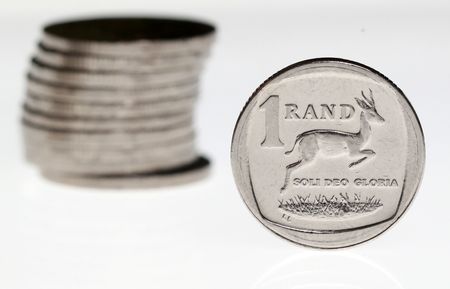(Refiles to fix typographical error in headline)
By Georgina McCartney
HOUSTON (Reuters) -Oil prices settled at their lowest since early May on Monday as investors weighed a potential global glut, with U.S.-China trade tensions adding to concerns about an economic slowdown and weaker energy demand.
Brent crude futures settled down 28 cents, or 0.46%, at $61.01 a barrel. U.S. West Texas Intermediate futures settled down 2 cents, or 0.03%, to $57.52.
Both benchmarks fell more than $1 earlier in the session, and both closed at their weakest levels since early May.
Oil traders’ concerns have shifted from under-supply to over-supply, the futures contract structure of the global benchmark Brent showed.
The six-month spreads for Brent and U.S. crude futures both show contracts for earlier loading are trading below those for later loading, a structure known as contango, which encourages traders to pay for storing oil so it can be sold at higher prices when supplies are expected to have shrunk in the future.
The Brent contango, which emerged on Thursday for the first time since a brief appearance in May, was trading at its widest since December 2023.
The U.S. crude futures contango emerged on Friday for the first time since January 2024.
“These glut fears are now descending onto the market, particularly looking forward into 2026. We will start to see floating storage pick up and inland tanks get filled,” said John Kilduff, partner with Again Capital.
“This is a real bearish narrative that we have not seen in some time,” Kilduff added.
Both benchmarks declined more than 2% last week, marking their third consecutive weekly decline, partly due to the International Energy Agency’s outlook for a growing supply glut in 2026.
Both futures contracts spent much of the year in the opposite structure, called backwardation, where prompt prices trade at a premium to later supply. That reflects a perception of tight near-term supply and solid demand.
US-CHINA TRADE WAR
The two top oil consumers, the United States and China, have renewed their trade war, imposing additional port fees on ships carrying cargo between them – tit-for-tat moves that could disrupt global freight flows.
Last week, the head of the World Trade Organization said she had urged the United States and China to de-escalate trade tensions, warning that a decoupling by the world’s two largest economies could reduce global economic output by 7% over the longer term.
Curbing some of oil’s losses on Monday was news that a lobbying group whose board includes U.S. firms such as Oracle, Amazon.com and Exxon Mobil is urging President Donald Trump’s administration to immediately suspend a rule it says halted billions of dollars’ worth of U.S. exports and will prompt China and other countries to drop U.S. firms from their supply chains.
Uncertainty remains over what may happen with Russian oil supply, with Trump saying again on Sunday that the United States would maintain “massive” tariffs on India unless it stops buying Russian oil.
On the supply side, U.S. energy firms last week added rigs for the first time in three weeks, energy services firm Baker Hughes said.
“Near term, the market is sitting in a classic shoulder-season mix of refinery maintenance, softer product cracks and a watchful eye on weekly U.S. inventory data,” analysts at energy consulting firm Gelber and Associates said in a note.
Adding further pressure, U.S. crude oil stockpiles were expected to have risen last week, a preliminary Reuters poll on Monday showed.
Five analysts polled by Reuters ahead of weekly inventory data estimated on average that crude inventories rose by about 1.5 million barrels in the week to October 17.
(Additional reporting by Shadia Nasralla, Ahmad Ghaddar in London, Yuka Obayashi in Tokyo and Colleen Howe in Beijing; Editing by Emelia Sithole-Matarise, Will Dunham and Louise Heavens)










